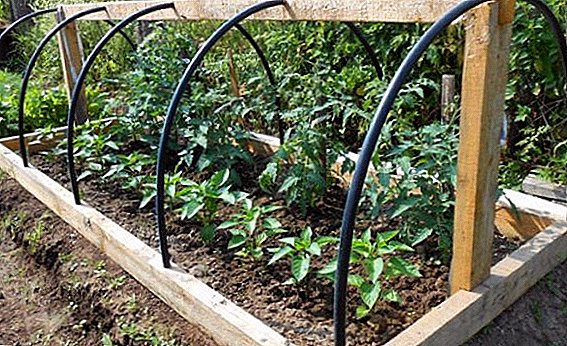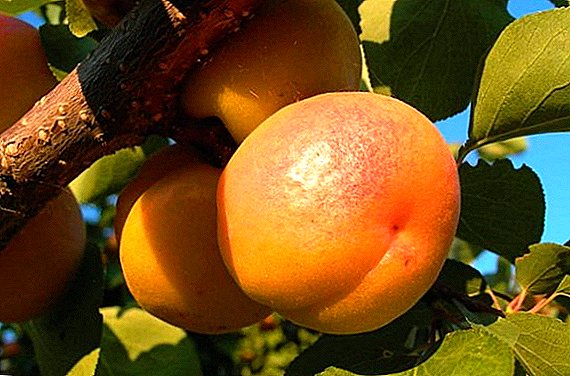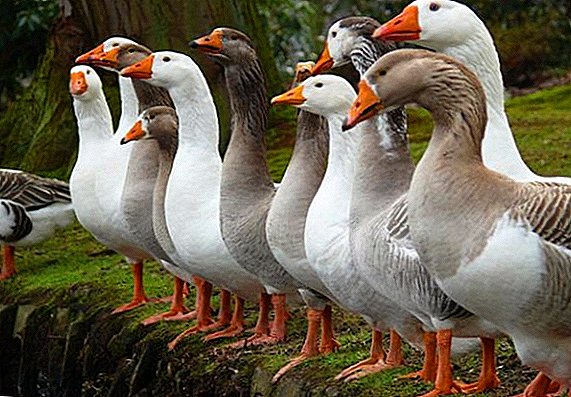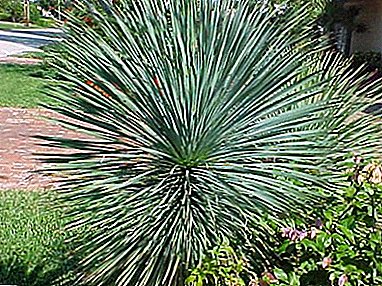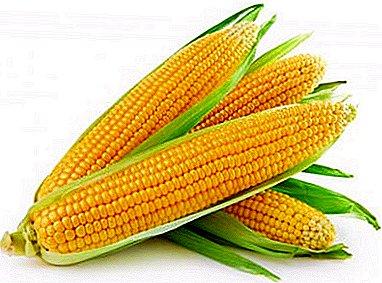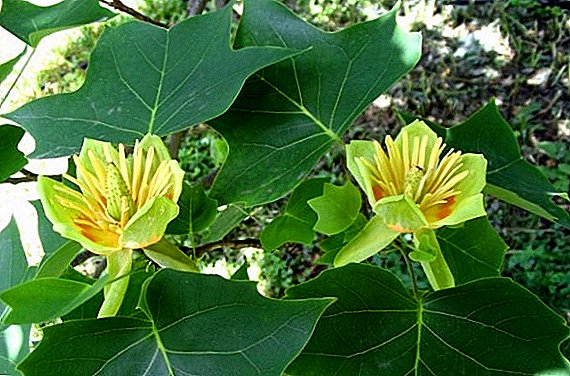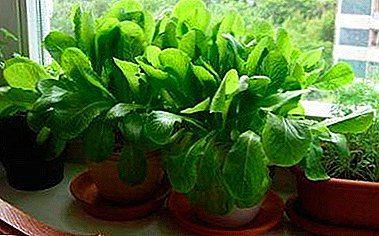 Farmers engaged in breeding of poultry with the help of incubators know that several important factors affect the quality of the brood. One of them is a high-quality incubation material. Consider the selection criteria for goose eggs and the rules for their storage before incubation.
Farmers engaged in breeding of poultry with the help of incubators know that several important factors affect the quality of the brood. One of them is a high-quality incubation material. Consider the selection criteria for goose eggs and the rules for their storage before incubation.
How to choose goose eggs for incubator
When selecting material for laying in the setter, you need to examine it in two ways:
- Visual inspection: it helps to determine if the testicle’s appearance (shape, weight and condition of the shell) meets the requirements.
- Ovoskopirovaniya, or otoscope scanning, during which the internal contents are examined: the yolk, the air chamber and the embryo.
Did you know? Tibetan monks worshiped the snow-white goose, because they believed that he was the incarnation of Lord Shiva. And the ancient Romans considered the goose the favorite of Mars, the god of war.
Egg weight and shape
Base standards:
- weight norms: 120 - 140 g (for light breeds) and 160 - 190 g (for heavy breeds);
- size standards: 8–10 cm long and 4–5 cm wide;
- the form must be correct; it is not allowed to be too elongated, pear-shaped, conical, flattened, round.

Important! Instances whose dimensions fall outside the specified limits are rejected. There is no guarantee that healthy goslings will hatch from them.
Shell
This part of the egg also has requirements:
- the surface is smooth and even;
- hard, not soft;
- no damage: cracks, chips;
- free of defects: dents, bumps, roughness, growths and belt (thickening in the middle);
- clean, no pollution: droppings, blood, feathers.
Some poultry farmers wash their eggs with water and disinfect them in potassium permanganate. Others say that washing is harmful, and they are purified by hydrogen peroxide.
Video: preparing and laying goose eggs in an incubator
Yolk
Before laying in the incubator, all eggs should be enlightened with an ovoscope, no matter how perfect they look. It makes no sense to lay unfertilized specimens and those within which there are pathologies.
Important! To the goose egg did not have time to get dirty, it is desirable to take it from the nest immediately after the demolition. If it lies in the litter for more than 5 hours, then microbes that are detrimental to the embryo will penetrate the pores of the shell.
The yolk must meet the following criteria:
- one, not two;
- dark color and without clear boundaries;
- located in the center;
- mobility: when the egg turns, the yolk slowly returns to the center (if it does not move, it means that it stuck to the shell);
- haillocks that support the yolk are integers;
- yolk uniformity, without different inclusions;
- the protein is thick, not liquid, without blackout;
- yolk and protein should not be mixed.

Air chamber
Here, too, have their own standards:
- location: at the blunt end, but not from the side and not from the sharp side;
- size: small, no thicker than 2 mm (a large air chamber speaks of the product stale);
- should not be mobile (movement - a sign of detachment of the inner shell).
Learn how to choose a goose for a tribe, how to determine the sex of geese, when geese start to fly at home, how many eggs a goose carries.
Is there any germ
It is possible to determine the presence of the embryo only on days 4–5 after wrecking. Until that time, the yolk is too mobile and pale, and the air chamber has not yet been formed. Therefore, it makes sense to ovoskopirovaniya on the fifth day, but not before. In this case, the embryo itself will still not be visible.
Signs of fertilization:
- having the correct size air chamber in the right place;
- the yolk is no longer light, but a dark and homogeneous consistency;
- the yolk moves inside the squirrel, but slowly and always returns to the central position.

Storage goose eggs to bookmark
Many poultry breeders have to wait several days to collect the right number of eggs and to breed chicks of the same age from them. In addition, experts noted that it is better to incubate not just the eggs that were laid down, but for several hours and even days. This cooling strengthens the embryo.
Did you know? On the second day after hatching, the goslings already know how to swim skillfully. Goose doesn’t teach them that, because swimming is a natural instinct.
How many goose eggs are stored
Opinions on this issue differ. Some argue that the best age of eggs for a bookmark is 5 days, others consider the optimal period of 10-15 days. But the longer they are stored, the lower the percentage of brood:
- if the material is stored for 5 days, then hatchability 79.8%;
- 10 days - 72.7%;
- 15 days - 53.7%;
- 20 days - 32.5%;
- 25 days - 0%.
Storage rules
The storage conditions of the incubation material strongly influence the brood quantitative indicators and the quality (health) of the goose offspring.

Storage Rules:
- room: dry, clean, well ventilated, without foreign smells (in a dirty and damp room, destructive microbes enter the egg through the pores of the shell with air);
- temperature: 8–18 ° C, ideally 12–15 ° C (at temperatures above 22 ° C, the embryo begins to develop, but incorrectly, and the egg quickly grows old);
- humidity: 70-80 %;
- egg position: vertically, with a blunt end up (turn over once a week) or horizontally, with a sharp end slightly down (turn over daily);
- transportation: very carefully, without shaking, so as not to damage the air chamber or the integrity of the egg).
Familiarize yourself with the productivity characteristics of Lands, Italian White Geese, Mamut, Governors, Kuban, Gorky and Tula, Chinese, Linda Geese, Danish Legart, Hungarian White, Arzamas, Toulouse, Rhine, Kholmogory geese.
Increased shelf life
To fill the incubator tray, sometimes you have to store material for more than 10 days. Then you need to reduce the temperature in the room to 8-10 ° C.

Experimentally, experts have developed several methods that extend the shelf life of the incubation material to 20-25 days:
- Periodic heating: 2-4 days after laying the eggs are heated in an incubator for 4-5 hours at a temperature of 37.5-38 ° C and humidity of 55-70%. Then the tray is returned to the previous storage conditions. Some poultry farmers repeat this procedure every 2-3 days, others after 5 days. And some believe that it is enough to perform it once.
- Daily heating: Starting from the fifth day, the egg tray is sent to the incubator for one hour every day, heated to 37.2 ° C. This procedure reproduces the natural process when a goose sits on a hatching bed daily.
- Storage in the changed gas environment: The eggs are placed in an airtight package (a can of lavsan-polyethylene), in which over time the oxygen, which the testicles absorb, dries out. The less oxygen in the environment around the egg, the slower it ages. You can also enrich the environment in the bag with nitrogen, ozone or carbon dioxide from a can of carbon dioxide, aging will slow down even faster. In such a container, the material should be stored at 10-12 ° C.
Important! Before using any method of long-term storage, each testicle must be disinfected.

Laying eggs in an incubator
- Before filling, the incubator is heated to 37.8-38 ° C, for this purpose it is included 3-4 hours earlier.
- The material was prepared in advance: the correctly selected specimens, checked on the ovoscope, clean and disinfected.
- Products are placed in the tray horizontally.
- In the absence of an automatic turning mechanism, they will need to be turned over manually (preferably 4 times a day). For convenience, you can mark each copy from two sides.
- Set the mode in the incubator: temperature - 38-39 ° C, humidity - 70%.
- Follow the rules for incubating goose eggs.
Learn how to grow goslings in an incubator.
Step laying of goose eggs in an incubator: video
Ovoskopirovaniya by day
Ovoskopirovaniya necessary before and during incubation 3-4 times:
- Before bookmark, check the quality of the product: no damage to the shell and dark spots, the state of the yolk and protein, the presence of the air chamber.
- On the 8-10th day of incubation: You can see the speck of the embryo and the grid of its circulatory system. You can also see injuries that have not been seen before, an empty, unfertilized egg (completely translucent) and a bloody ring (the embryo has died).
- 15-21 days: A good copy is not translucent, completely dark, and only the air chamber glows. The bad option: completely glowing - unfertilized, bright with a dark spot and without a blood grid - the embryo died.
- In the last days before hatching (28-29 day): you can see the movements of the goose, hear the noise and his squeak. Wicked specimen: dark, but no movements are seen and no sounds are heard - the little goose died.
Bad eggs should be removed from the incubator immediately after detection.
Learn about growing goslings at home, feeding goslings, the reasons why goslings can fall to their feet.
The selection of the incubation material and its storage must be approached very seriously. These two factors strongly influence the result of incubation. In order to get a good brood of healthy goslings, it is necessary to follow all the rules described above clearly.
Video: Ovoscoping hatching eggs
Reviews
Immediately need to wash and disinfect eggs intended for storage for incubation, or just before incubation?
Yes, it is advisable to disinfect the eggs immediately after collection and before laying. Then it is also recommended to disinfect them before shifting to the conclusion. But we must remember that the incubator also needs to be disinfected.
comizol1 writes:
Is it possible to disinfect the usual potassium permanganate?
Yes, it is possible, but the solution should not be too concentrated, since it penetrates into the egg and can harm the embryo. You can also bathe in a 1-1.5% solution of hydrogen peroxide, 0.2-0.5% peracetic acid, 1.5-2.0% chloramine B.
At home, the so-called wet disinfection of eggs is more acceptable, one of the methods of which is the treatment of the shell with low-dispersion aerosols of aqueous solutions of various disinfectants.
Virocid type disinfectant (VIROCID) is used by the method of aerosol or spray, it is also used for the treatment of hatcheries and incubation cabinets. A good method is to irradiate eggs with a quartz lamp at a distance of 30-40 cm on both sides for 10-15 minutes.
When colibacteriosis occurs in the farm, eggs are additionally iodized in a 0.5-1% iodine solution or chlorinated in a solution of bleach containing 1.2-1.5% of active chlorine, and when an aspergillosis occurs, they are treated with a 5% solution copper sulfate.


Instead of an ovoskop, I use a children's filimoscope, everything is perfectly visible.




